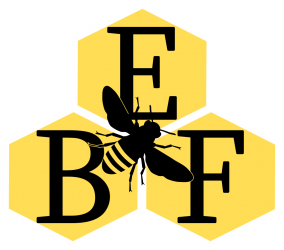Listen to your bees.
Perhaps we should have seen it coming. Looking back, the signs were there. But this being our first year, we didn’t know exactly what was going on. We still didn’t understand bee language.
 |
| All honey, no brood |
It started with some queen cells in the established hive. A couple months ago we opened the hive and in the medium brood box (1 deep and 1 medium) there were a hand-full of queen cells on a frame. We thought the hive was preparing to swarm, so we took obvious preventative measures by removing the queen cells and adding a deep brood box to give the colony some room to expand. We checked again the following week, and again there were queen cells. That seemed a bit odd since they had plenty of room to expand. We figured the cells were left over from the previous week and removed them. Meanwhile, the hive seemed to be quite busy. They were packing all the frames in both the brood chamber and the super with nectar. They weren’t really drawing new comb very well, but they were really filling the hive up with nectar.
After another two weeks we went back into the hive and again saw queen cells. This time they were capped. And not only that, as we were examining the frame, we saw a new queen hatching. That in and of itself was very cool to witness. But our awe was short-lived as we tried to figure out what was going on with this colony. We moved the frame with the new queen plus a frames of brood, honey, and pollen to a 5-frame nuc box. Our first nuc! That was exciting.
When we opened the hive up the following week there was yet another queen cell. Another one? No matter what we did the past month these girls were persistent in making a new queen. We tried giving them more room, adding another super, splitting them into a nuc. What were they trying to tell us? It was then we realized we weren’t dealing with a swarming hive, we were dealing with a failing queen.
It all started to add up. The queen was supposedly two or three years old. While we still saw eggs, there were less and less opened and capped brood and more and more nectar. The laying pattern was spotty. The queen cells were on only one frame, and clustered together. And there was plenty of room in the hive. We had been so concerned with (and read so much about ) swarming that a failing queen wasn’t even on our mind.
At this point we had a decision to make. Buy a queen or let the hive raise a new one? The first option is the quickest and the most fool proof. Pick up a new queen that was raised and selected by a breeder, add her in a queen cage, come back in a few days to check that she was accepted, and you’re done. The second option is much longer and far more risky. The hive will raise several queen cells. Once they hatch, the most fit queen will kill off remaining queens and queen cells, at which point she will mate and start laying. The whole process takes 3 to 4 weeks. It’s a lengthy process that can go wrong at any time. Perhaps the bees will raise sub-par queens. Maybe the queen will get killed on her mating flight. Or she may mate with an inferior drone. If anything goes wrong, the process starts over. The hive could go queenless for a couple months. In the interim a laying worker may emerge that screws the whole thing up. The whole colony could collapse and be lost.
So which option did we choose? The sure-fire method that would get our hive back in shape in time to salvage the remainder of the nectar flow? Or the risky we-could-lose-it-all method that could cause us headaches and sleepless nights? Of course we picked the path that could lead to total failure. More of that in Part 2.

